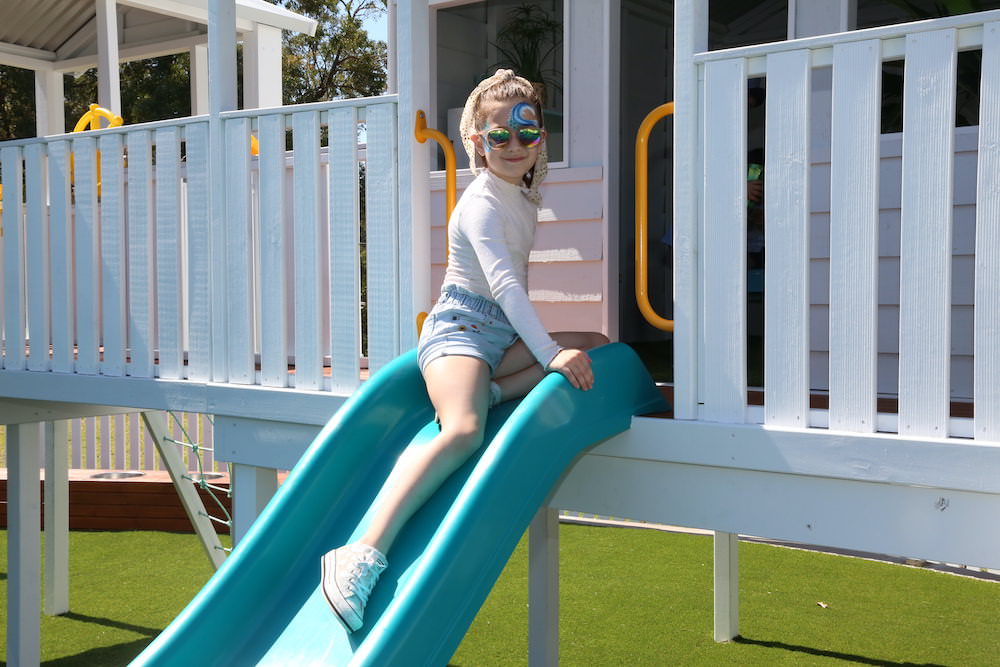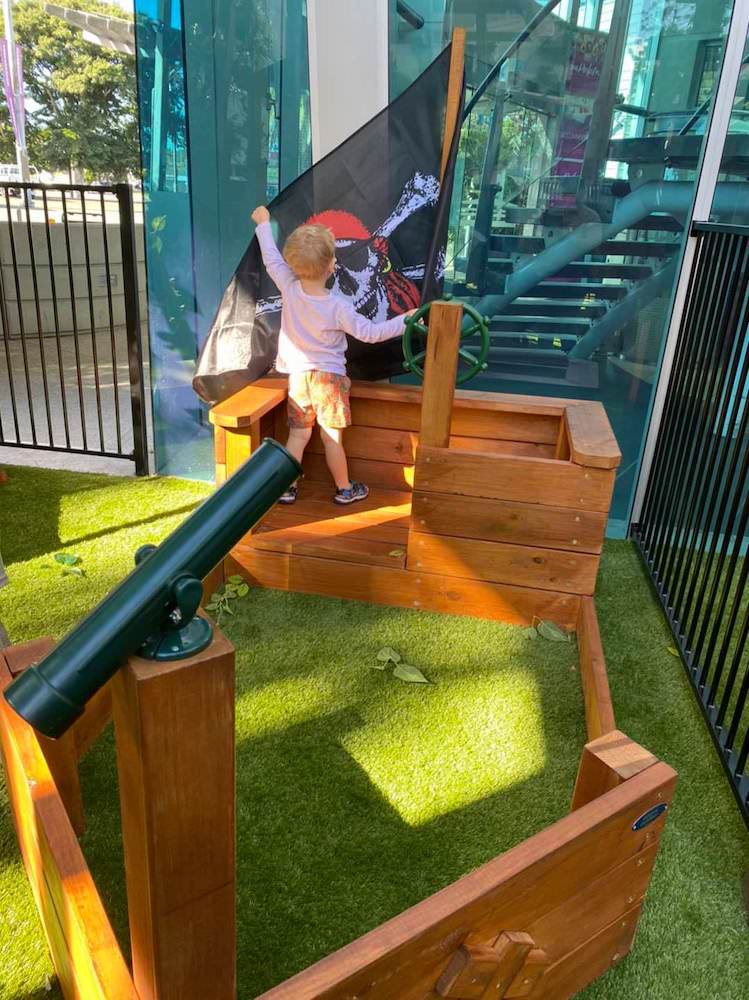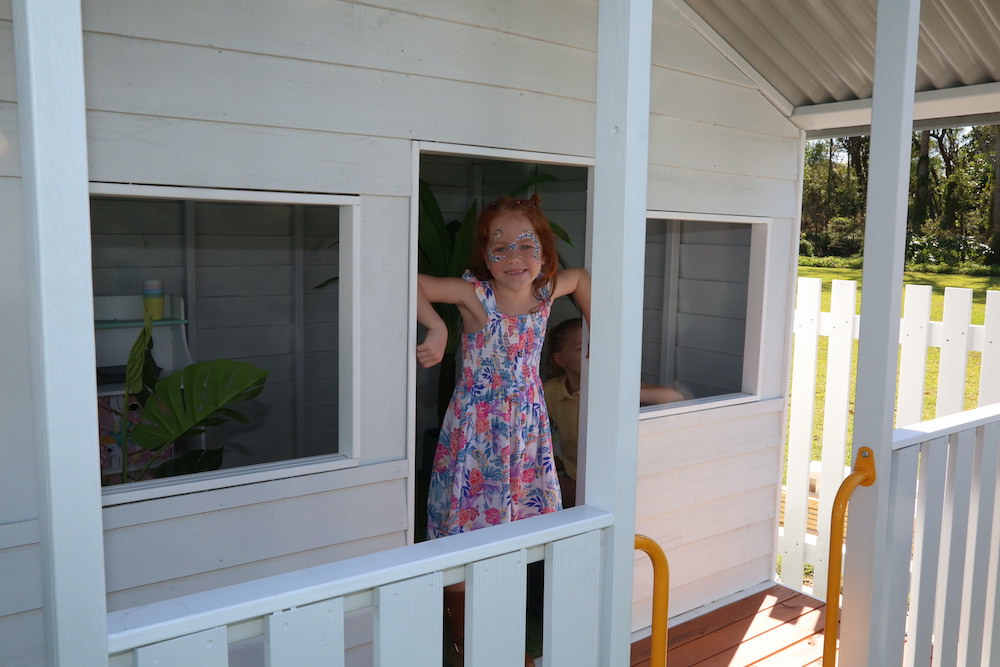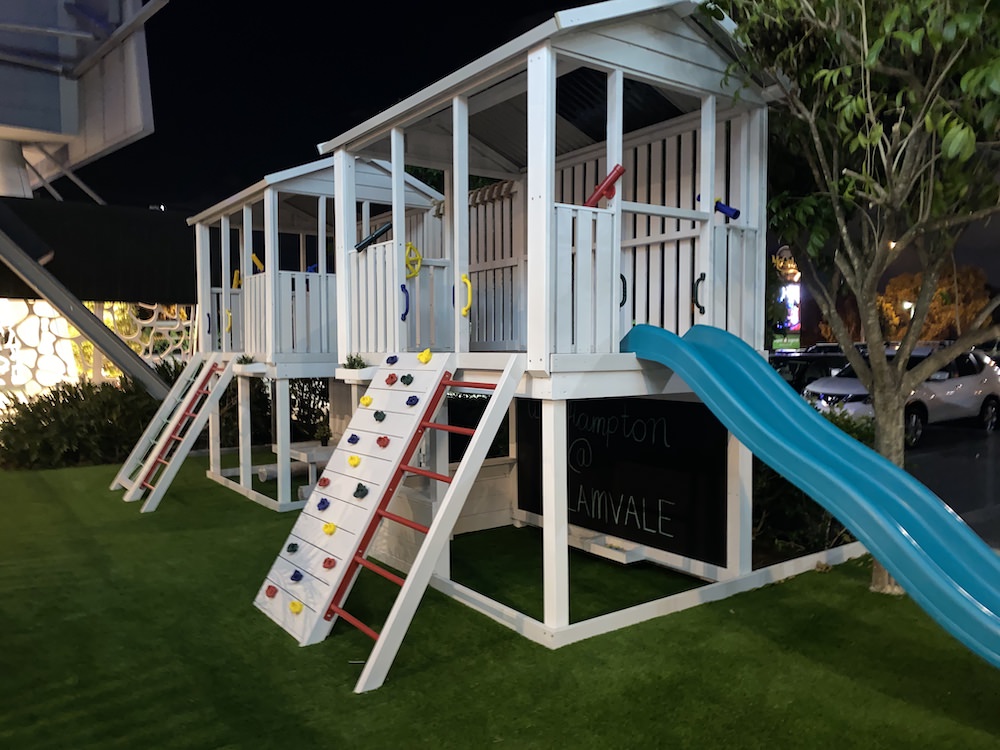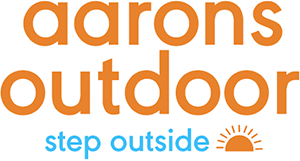For many children today, recess is the only opportunity for physical activity and play during school hours. However, even outside of school, playtime for kids often involves sedentary activities like video games and tablets.
This lack of physical activity can negatively impact children’s health and well-being. An important way to encourage fitness in childhood is through well-designed playgrounds that promote active play.
Over the years, as educators and psychologists recognised the myriad benefits of outdoor play for young kids, school playgrounds evolved. Playgrounds provide the ideal venue for children to be physically active while having fun. Playgrounds can boost heart rate, build motor skills, and engage kids in exercise by incorporating equipment and open spaces that facilitate movement and activity.
Promoting physical literacy at a young age establishes healthy habits that make it more likely a child will remain active throughout their lifetime. Thoughtfully created playgrounds can improve children’s cardiovascular fitness, strength, coordination and more.
How Do Playgrounds Promote Physical Fitness
Playgrounds promote fitness by providing opportunities for various forms of physical activity that get kids moving. Open spaces, varied equipment and games facilitate aerobic exercise to build endurance and cardiovascular health.
Climbing structures, monkey bars, balance beams, and more help improve motor skills, strength and coordination. Wheeled toys like tricycles develop leg muscles.
Games of chase and tag encourage sprinting and agility. Providing balls and ropes promotes activities that enhance flexibility, throwing skills and spatial awareness.
Even simple paint designs on the asphalt, like targets and hopscotch grids, can inspire movement and jumping. With thoughtful design choices and encouragement of active games, playgrounds can incorporate full-body activities that improve multiple facets of fitness. The variety and fun of playground exercise help kids build physical literacy and lifelong healthy habits.
Benefits of Playgrounds
Children of all ability levels will be able to play safely and reap the physical and mental benefits of the playground. Well-designed playgrounds that encourage active play provide a wealth of physical benefits that support children’s physical fitness and overall health.
From building foundational skills to keeping kids engaged in heart-pumping activities, playgrounds can promote cardiovascular health, muscle strength, motor skills, and coordination, develop their physical and cognitive skills, adopt a more active lifestyle and carry healthy habits.
Promotes physical literacy and motor skill development
Playground equipment like ladders, slides, monkey bars and balance beams helps improve coordination, balance, and motor control. Mastering fundamentals like skipping, crawling, climbing, swinging, sliding and jumping forms physical literacy.
Open spaces allow kids to practice skills like running, leaping, galloping, dodging and side-stepping. Developing whole-body control and comfort in different movements gives kids the physical health and literacy to participate in sports, dance, gymnastics and other lifelong active pursuits.
Get kids moving and burning energy
Playground games like tag, hide-and-seek, and chasing require bursts of high activity and get hearts pumping. Playgrounds inspire movement through equipment like swings, jungle gyms, and climbing ropes. Having balls, frisbees, hula hoops, and jump ropes also motivates participation and play. All this movement and activity translates to greater calorie burn, cardiorespiratory benefits, and healthy weight maintenance.
Provides opportunities for aerobic exercise
Active playgrounds keep kids engaged in moderate to vigorous aerobic activity as they navigate equipment, run grassy fields, and play group games. This aerobic exercise elevates heart rate, improves cardiovascular stamina, and strengthens the heart and lungs. Running obstacle courses, climbing high structures, or playing tag delivers particularly beneficial aerobic workouts.
Develops strength, endurance and coordination
Equipment like monkey bars, overhead ladders, balance beams and pole slides require coordinated pulling, hanging and balancing to navigate. This builds functional strength and endurance in the upper body and core.
Lower body strength develops through climbing stairs, rope ladders and crawling through tunnels. Moving between diverse activities requires coordination and whole-body awareness.
Designing Play Spaces for Maximum Activity
Playground design plays an important role in promoting physical activity. Creating playgrounds that constantly engage kids in physical play requires intentional design elements. Incorporate separate areas for different age groups so preschoolers have low-to-the-ground, developmentally appropriate equipment while towering structures challenge school-age children.
Include diverse apparatus like twisted slides, spider web climbers, firepole slides, suspension bridges, and scramble nets that build balance and motor skills. Open grassy spaces allow for chasing games and field sports like soccer.
Rubberised track pathways around the perimeter encourage jogging or cycling laps and are wheelchair accessible. Shaded areas with benches provide occasional rest spots while keeping kids near activity zones.
Movable parts like basketballs, jump ropes, hula hoops, and chalk facilitate active games. Paint interactive themed maps, mazes or games on the blacktop—Prioritise safety with resilient surfacing under high structures.
Signage promotes proper equipment use and games to try. Keeping sight lines open aids monitoring. Positioning playgrounds centrally within neighbourhoods improves access. When designing playgrounds, maximise play value, variety of movement options, and safety based on the latest research and safety guidelines. With strategic planning, playgrounds can be constructed to engage kids in continuous heart-pumping physical activity.
Activities to Encourage Active Play
In addition to playground equipment, there are many games and activities that playground supervisors and parents can orchestrate to get kids engaged in heart-pumping play. Setting up fun activities provides structured ways to inspire movement.
Games like tag, chase, obstacle courses
Tag games are playground classics that get kids running and dodging. Simple variations like freeze tag, amoeba tag, and TV tag add fun twists. Set up obstacle courses using playground equipment like tunnels to crawl through, low bars to limbo under, platforms to climb over, and poles to slalom between. Time kids as they complete the course and compete to improve. These games build speed, agility and cardiovascular endurance.
Hula hoops, jump ropes, balls
Provide a variety of movable equipment for groups of kids to play active games together. Hula hoop contests see who can hoop the longest. Jump rope relays and double-dutch build coordination. Play catch games with bouncy balls of different sizes, or use beach balls to keep a volleyball game going. The social fun will keep them moving.
Chalk art and hopscotch
Get creative with sidewalk chalk by drawing mazes, targets, hopscotch boards and more on blacktops. Kids can jump along the hopscotch squares, throw bean bags at targets, or race friends through chalk mazes. Let kids design their own games and fitness challenges, too. The opportunities for movement are endless.
Dancing and movement challenges
Play music with upbeat tempos and different rhythms for impromptu dance parties. Call out silly movements like “jump like a frog” or “strut like a peacock” for an activity kids will eagerly imitate. Allow free dance self-expression or organise coordinated group dances. Any opportunity to dance and creatively move to music energises kids.
Best Practices for Active Play Spaces
Creating playgrounds that promote continuous physical activity requires thoughtful design and planning. Separating equipment into areas for different age groups allows for developmentally appropriate challenges – preschoolers need low-to-the-ground structures, while elementary-age kids can navigate towering components.
Varied equipment like slides, climbing structures, overhead ladders, and monkey bars enables climbing, crawling, balancing, hanging, and full-body movement. Movable parts like balls, jump ropes, and hula hoops empower active games.
Rubber flooring, wood chips, or sand provide impact-absorbing surfaces under high structures to prevent injuries from falls. Shade structures, benches, and water fountains allow for intermittent breaks while keeping kids near activity zones.
Pathways accommodate wheeled toys like tricycles or scooters. Painting interactive fitness games on the blacktop, like hopscotch or mazes, provides guided physical challenges. And signage can promote the proper use of the equipment and showcase game ideas. Accessibility features like ramps allow inclusion for all abilities.
Conveniently locating playgrounds in communities ensures access for local families. The best practices for constructing active playgrounds that entice kids into endless exercise play are maximising play value, variety, and safety through research-based design. With strategic planning, playgrounds can be built to optimise engagement in heart-pumping activities.
Getting Kids Active Through Playground Design
Playgrounds can clearly play an integral role in promoting cardiovascular health, total body strength, mental well-being, and motor skills and contribute to your children’s physical development when thoughtfully designed with dynamic exercise-motivating features. The research clearly shows that active playgrounds improve fitness.
At Aaron’s Outdoor, we are passionate about crafting creatively designed playground spaces that encourage heart-pumping, vigorous play. Our team can help you plan and build a playground that incorporates open grassy areas and walking paths for chasing games, diverse elevated equipment like rock walls and rope climbs that build strength, balance features that develop coordination, movable parts like balls and jump ropes for active games, and painted interactive hopscotch, mazes and targets on the blacktop.
Our playgrounds incorporate ample equipment that encourages engaging the upper body. We maximise play value and movement opportunities using the latest safety guidelines and accessibility research to create playgrounds where fitness happens naturally through play.
Contact Aaron’s Outdoor today to discuss your community’s playground goals and let our experts help turn your vision into an inspiring reality. We would love to partner with you on developing a thoughtfully designed, accessibility-focused active playground that serves your neighbourhood for generations while helping raise healthy, active children.
Frequently Asked Questions
How does playground design promote physical activity?
Playgrounds can be intentionally designed to encourage more vigorous physical activity by incorporating large open grassy spaces for field games like soccer or tag, integrating varied elevated outdoor fitness equipment like rock climbing walls, rope ladders, overhead hanging bars, and twisty slides that build strength and balance, and addition of features like balance beams, wobble boards, and suspension bridges that improve coordination and develop motor skills. Painting interactive fitness games like hopscotch, mazes, and targets on the blacktop also promotes movement.
What kinds of activities on playgrounds help improve fitness?
High-intensity chase games, timed obstacle courses that encourage climbing, crawling, and jumping through playground structures, competitive relay races, ball games requiring throwing, catching and dodging, jump rope and hula hoop challenges to see who can last the longest, and impromptu dance parties or silly movement imitations are examples of playground activities that elevate heart rate for sustained periods to build cardiovascular endurance. The variety also helps strengthen muscle development, enhance flexibility, and burn calories.
How does playground use improve gross motor skills?
Many think developing fine motor skills is exclusively an “indoor activity”. That is false! Playgrounds can also be a great place for our children to improve fine motor skills.
The diverse variety of suspended or elevated equipment like monkey bars, overhead hanging ladders, wiggly hanging bridges, vertical rope climbs, and balancing features like beams, wobble boards, and angled balance logs require coordinated pulling, hanging, balancing and adaptive core control.
Mastering navigation builds functional strength while improving motor coordination, body awareness, spatial perception, and agility. Jumping sideways over painted lines, galloping or skipping around cones, and leaping across distances also develop motor control.
Can playgrounds really instil lifelong fitness habits?
Yes, research shows that engaging in structured physical activity through playground games and equipment use that builds foundational skills like strength, flexibility, coordination, and cardiovascular endurance in childhood fosters enjoyment of exercise.
This positively shapes attitudes to continue being regularly active with sports or fitness pursuits into adulthood. So, promoting the dynamic, active use of playgrounds to children in fun, engaging ways helps establish intrinsic motivation for lifelong healthy fitness habits.
What are the additional benefits of physical activities on the playground?
Playgrounds that encourage energetic play through appealing outdoor fitness structures and games reap rewards beyond just aiding physical development. Social skills blossom as kids communicate, share, problem-solve and bond during group activities. Mental health benefits, too, as exercise boosts cognitive functions, focus and mood.
Fresh air and sunlight support immunity and vitamin D regulation. Less screen time means decreased risk for obesity and related issues later in life. When playground design prioritises physical activities, the benefits extend far beyond just kids’ bodies.
